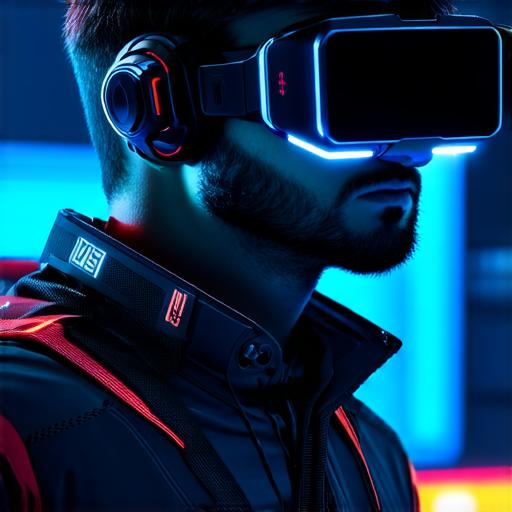
What are the latest developments in virtual and augmented reality technologies within the gaming industry?
In recent years, virtual reality (VR) and augmented reality (AR) technologies have gained significant attention from the gaming industry. These immersive technologies are transforming the way games are experienced and creating new opportunities for game development.
Virtual Reality (VR)
Virtual reality is a computer-generated simulation that allows users to experience a three-dimensional environment as if they were really there. The immersive nature of VR has made it an attractive technology for the gaming industry, allowing players to fully immerse themselves in a game world and interact with their surroundings in a way that was previously not possible.
One of the most significant developments in VR technology is the release of standalone VR headsets such as the Oculus Quest 2. These devices do not require a high-powered PC or console to function and can be used anywhere, making them more accessible to gamers. In addition, advancements in display resolution and tracking technology have improved the overall user experience, allowing for smoother and more realistic gameplay.
Virtual reality has also been used in other industries such as education, healthcare, and entertainment, but it is the gaming industry that has embraced VR technology the most. Games like “Beat Saber” and “Job Simulator” have become popular VR games that provide a unique and immersive experience to players.
Augmented Reality (AR)
Augmented reality, on the other hand, is a technology that overlays digital content onto the real world. AR has been used in gaming for several years now, with popular games like “Pokemon Go” and “Snapchat Lenses” being examples of AR in action.
AR technology has the potential to revolutionize the way games are played by allowing players to interact with their surroundings in a more natural way. For example, a game could use AR to overlay digital objects onto real-world surfaces, creating an interactive and immersive experience that blends the real world with the game world.

One of the most promising developments in AR technology is the release of the Apple ARKit SDK. This platform allows developers to easily create AR experiences for iOS devices and has already been used to create a variety of AR games like “Ingress” and “Monument Valley.”
Virtual Reality vs Augmented Reality
While VR and AR are both immersive technologies, there are some key differences between them. VR is typically more expensive and requires more powerful hardware to function, while AR can be experienced on a wider range of devices.
In terms of user experience, VR provides a fully immersive experience that transports the player into a virtual world, while AR overlays digital content onto the real world, allowing players to interact with their surroundings in a more natural way.
Case Studies and Personal Experiences
One company that has been at the forefront of VR technology is Oculus. The company’s flagship product, the Oculus Rift, was one of the first commercial VR headsets and has since been used in a variety of applications beyond gaming, including education and healthcare. In addition to gaming, the Oculus Rift has also been used for virtual meetings, allowing remote teams to collaborate more effectively.
Another company that is making waves in the AR space is Magic Leap. The company’s augmented reality headset, the Magic Leap One, allows users to experience AR content in a variety of ways, including playing games and interacting with digital objects in their environment.
Personal experiences with VR and AR have been overwhelmingly positive, with many users reporting a sense of immersion and engagement that was not possible with traditional gaming methods. For example, one user reported that playing “Beat Saber” in VR made the experience more intense and engaging than playing the game on a regular TV.
Future Developments
The future of VR and AR in gaming is bright, with many exciting developments on the horizon.


